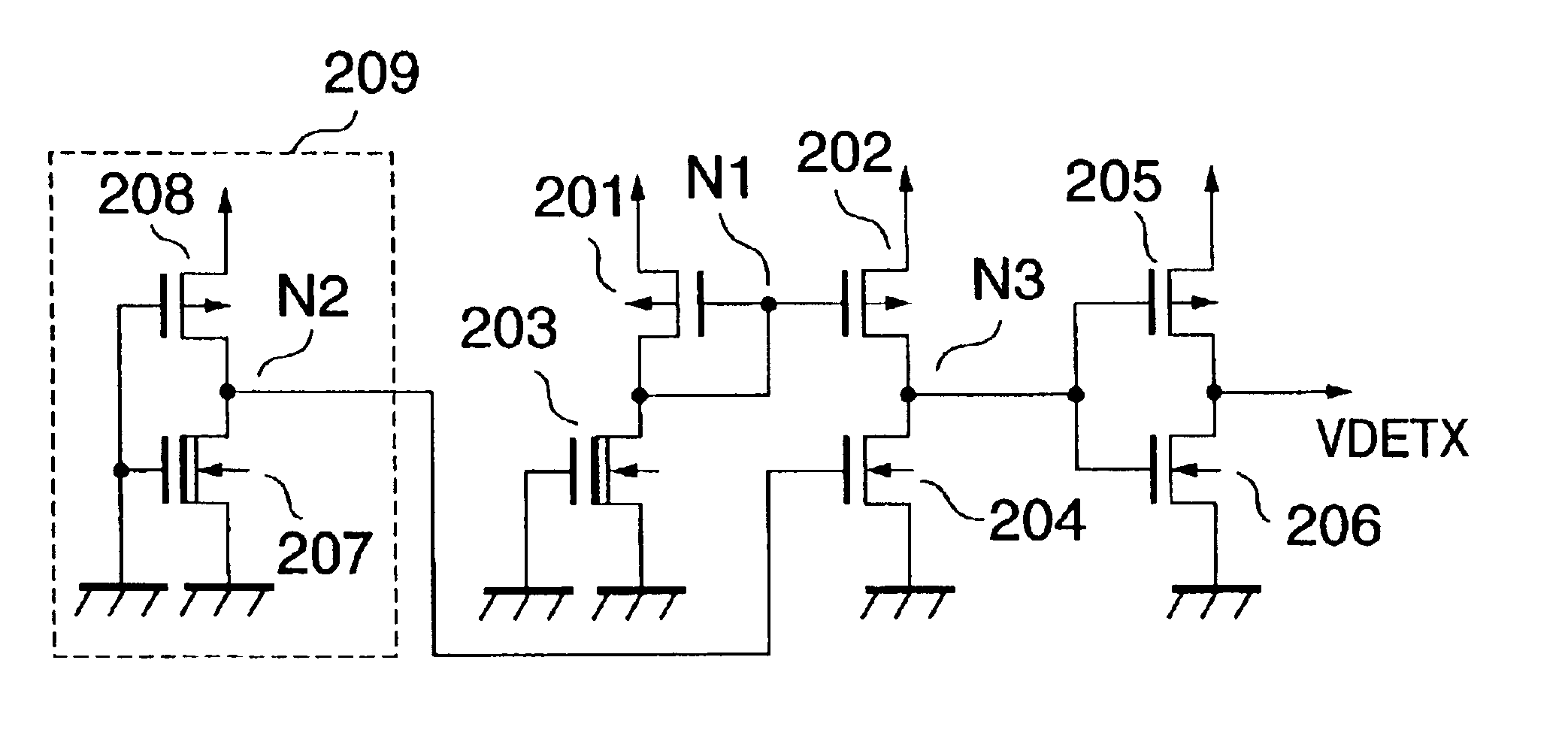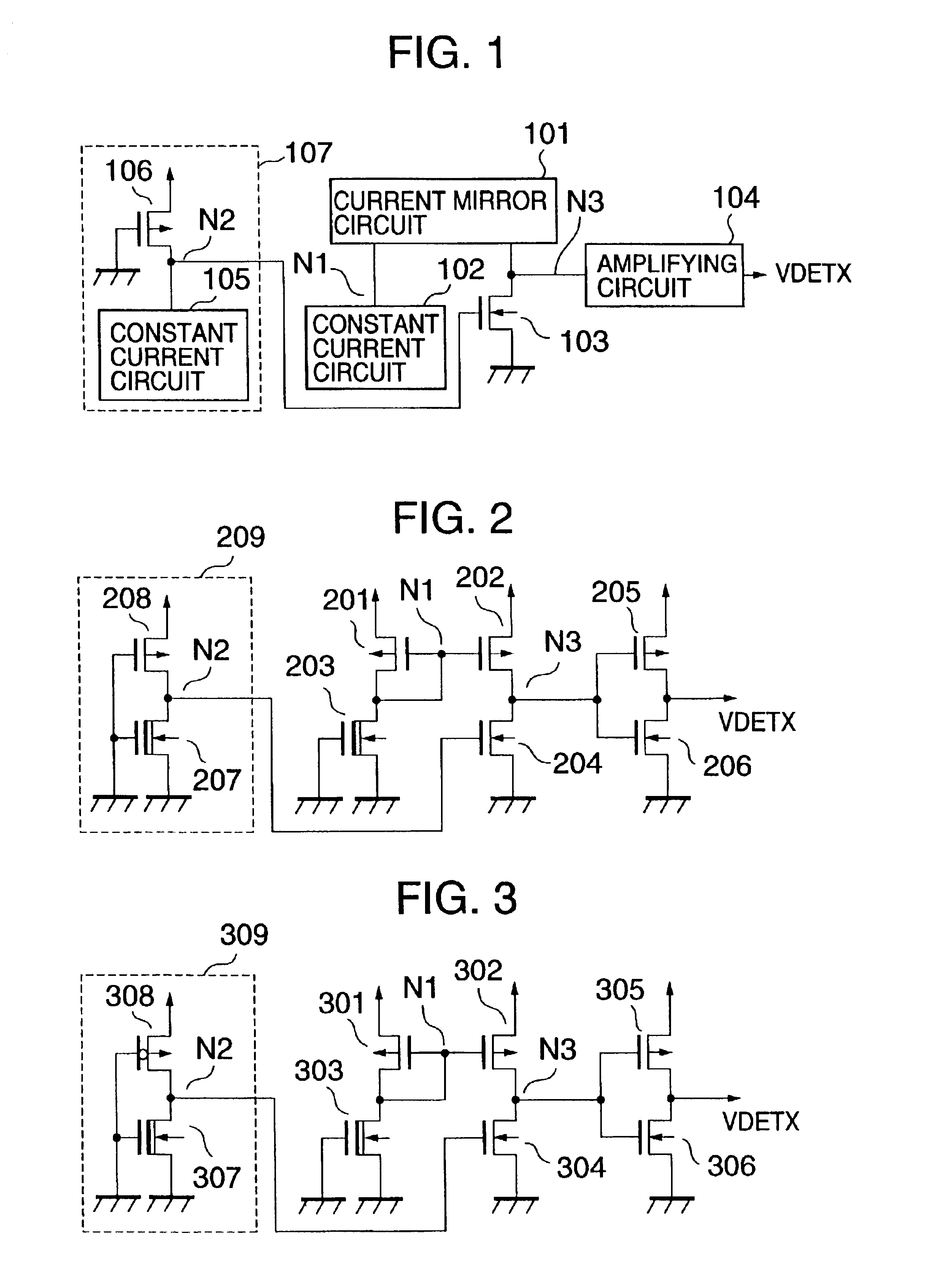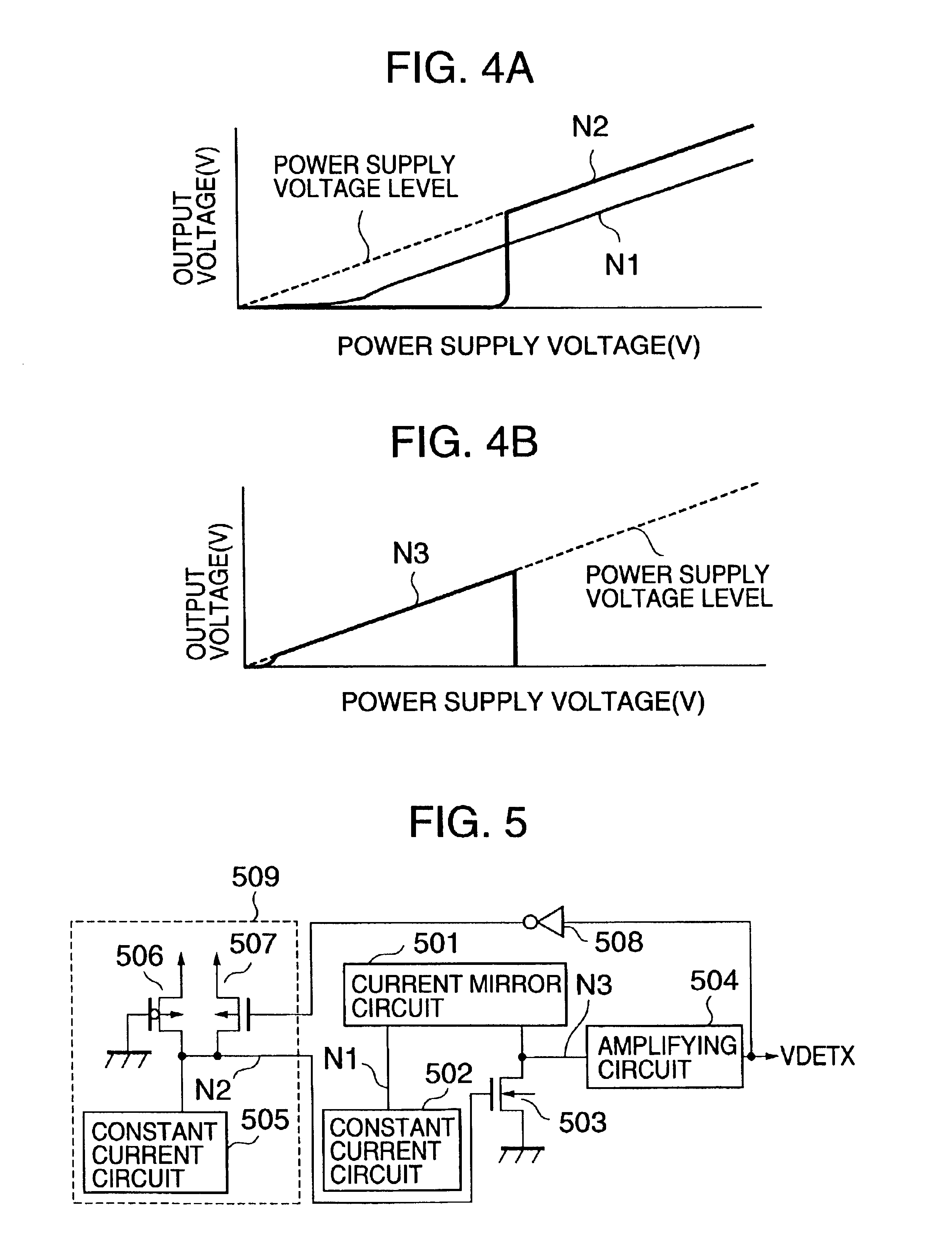Voltage detecting circuit
- Summary
- Abstract
- Description
- Claims
- Application Information
AI Technical Summary
Benefits of technology
Problems solved by technology
Method used
Image
Examples
embodiment 1
(Embodiment 1)
FIG. 1 is a block diagram showing a structure of a voltage detecting circuit according to Embodiment 1 of the invention.
In the present invention, a first constant current circuit 102 is connected to an input side N1 of a current mirror circuit 101, an N-type enhancement MIS transistor 103 is connected to an output side N3, an amplifying circuit 104 is connected to the output side N3 of the current mirror circuit, and the amplifying circuit outputs a detection output VDETX.
A gate of the N-type enhancement MIS transistor 103 is biased at a connection point N2 between a second constant current circuit 105 and a drain of a P-type enhancement MIS transistor 106. The second constant current circuit 105 and the P-type enhancement MIS transistor 106 constitute a bias circuit 107.
Since a gate of the P-type enhancement MIS transistor 106 is connected to ground as a first power supply potential, and its source is connected to Vcc as a second power supply voltage, a gate source vo...
embodiment 2
(Embodiment 2)
FIG. 2 is a circuit diagram showing a structure of a voltage detecting circuit according to Embodiment 2 of the present invention. In the figure, there is shown an example of a detailed structure of the current mirror circuit, the amplifying circuit and the constant current circuit of Embodiment 1.
A current mirror circuit is constituted by P-type enhancement MIS transistors 201 and 202 in which gates are connected in common, and the gate and drain of the P-type enhancement MIS transistor 201 are connected in common and serve as an input terminal N1 of the current mirror circuit.
A drain of the P-type enhancement MIS transistor 202 serves as an output terminal N3 of the current mirror circuit.
A P-type enhancement MIS transistor 208 and an N-type depletion MIS transistor 207 constitute a bias circuit 209.
Both the N-type depletion MIS transistors 203 and 207 operate as constant current elements in each of which a gate electrode and a source electrode are connected to groun...
embodiment 3
(Embodiment 3)
FIG. 3 is a circuit diagram showing a structure of a voltage detecting circuit according to Embodiment 3 of the present invention. In Embodiment 3, in order to obtain a relatively high detection voltage with high precision, a threshold voltage of a P-type enhancement MIS transistor 308 has a value higher than threshold voltages of P-type MIS transistors 301 and 302 constituting a current mirror circuit and a P-type MIS transistor 305 constituting an amplifying inverter. The intensities of the threshold voltages stated here are compared with each other in the absolute value.
A P-type enhancement MIS transistor 308 and an N-type depletion MIS transistor 307 constitute a bias circuit 309.
For example, threshold voltages of the P-type MIS transistors 301, 302 and 305 are made approximately −0.7 V, and that of the P-type MIS transistor 308 is made approximately −1.9 V.
As a result, approximately 1.9 V can be obtained as the detection voltage of the voltage detecting circuit of...
PUM
 Login to View More
Login to View More Abstract
Description
Claims
Application Information
 Login to View More
Login to View More - R&D
- Intellectual Property
- Life Sciences
- Materials
- Tech Scout
- Unparalleled Data Quality
- Higher Quality Content
- 60% Fewer Hallucinations
Browse by: Latest US Patents, China's latest patents, Technical Efficacy Thesaurus, Application Domain, Technology Topic, Popular Technical Reports.
© 2025 PatSnap. All rights reserved.Legal|Privacy policy|Modern Slavery Act Transparency Statement|Sitemap|About US| Contact US: help@patsnap.com



